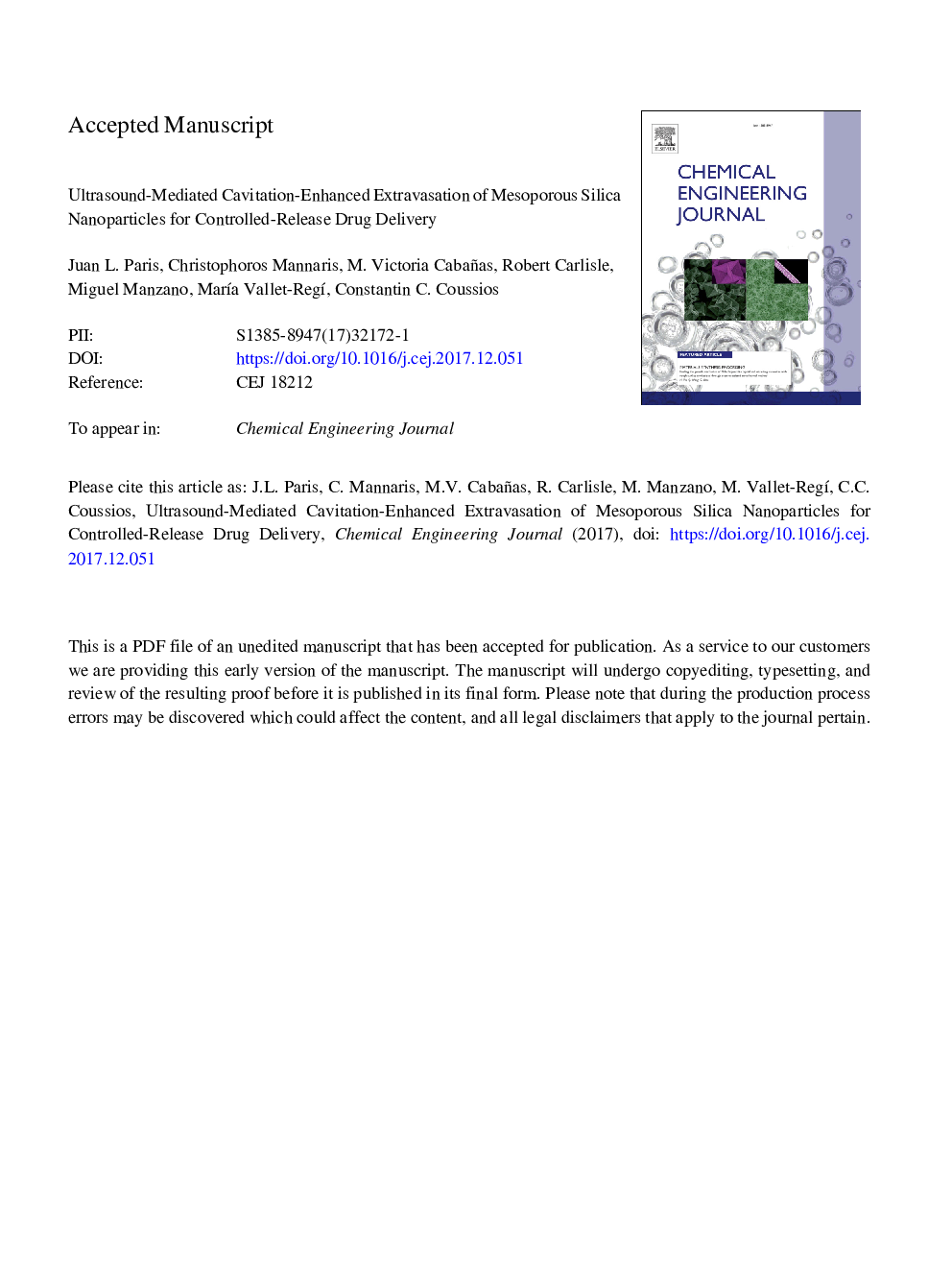| Article ID | Journal | Published Year | Pages | File Type |
|---|---|---|---|---|
| 6579935 | Chemical Engineering Journal | 2018 | 29 Pages |
Abstract
Mesoporous silica nanoparticles have been reported as suitable drug carriers, but their successful delivery to target tissues following systemic administration remains a challenge. In the present work, ultrasound-induced inertial cavitation was evaluated as a mechanism to promote their extravasation in a flow-through tissue-mimicking agarose phantom. Two different ultrasound frequencies, 0.5 or 1.6â¯MHz, with pressures in the range 0.5-4â¯MPa were used to drive cavitation activity which was detected in real time. The optimal ultrasound conditions identified were employed to deliver dye-loaded nanoparticles as a model for drug-loaded nanocarriers, with the level of extravasation evaluated by fluorescence microscopy. The same nanoparticles were then co-injected with submicrometric polymeric cavitation nuclei as a means to promote cavitation activity and decrease the required in-situ acoustic pressure required to attain extravasation. The overall cavitation energy and penetration of the combination was compared to mesoporous silica nanoparticles alone. The results of the present work suggest that combining mesoporous silica nanocarriers and submcrometric cavitation nuclei may help enhance the extravasation of the nanocarrier, thus enabling subsequent sustained drug release to happen from those particles already embedded in the tumour tissue.
Related Topics
Physical Sciences and Engineering
Chemical Engineering
Chemical Engineering (General)
Authors
Juan L. Paris, Christophoros Mannaris, M. Victoria Cabañas, Robert Carlisle, Miguel Manzano, MarÃa Vallet-RegÃ, Constantin C. Coussios,
